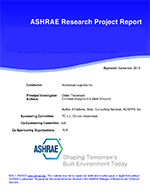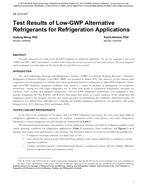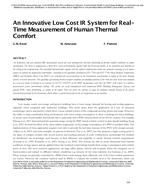Click here to purchase
Under frosting conditions, refrigerator evaporators tend to be rather inefficient because of the requirement for periodic defrosting. Moreover, because the frost layer acts as an additional thermal resistance, the cooling capacity of the evaporator tends to decrease with ongoing frost growth, and thus the compressor needs to run longer cycles to achieve the desired cooling effect. Chemical coatings (either hydrophilic or hydrophobic) are sometimes used to mitigate frost build-up and/or improve drainage during the defrost cycle. Although several studies have been performed on frost growth behavior, relatively few studies have specifically examined the effect of surface wettability on frost growth characteristics such as thickness and density. This paper focuses on the impact of hydrophilic/hydrophobic surfaces in refrigeration systems, the influence of environmental operating conditions, and the modeling of frost growth on surfaces which span a wide range of contact angles under natural convection conditions. In this study, three surfaces were examined ranging in contact angle from 45.3° to 158.9°. Relative humidity levels from 40%-80% and surface temperature values from -13 to -5°C were explored, with typical differences of 0.4-0.6 mm in frost thickness being observed.
Citation: 2018 Winter Conference, Chicago, IL, Conference Papers
Product Details
- Published:
- 2018
- Number of Pages:
- 9
- Units of Measure:
- Dual
- File Size:
- 1 file , 3.3 MB
- Product Code(s):
- D-CH-18-C012


